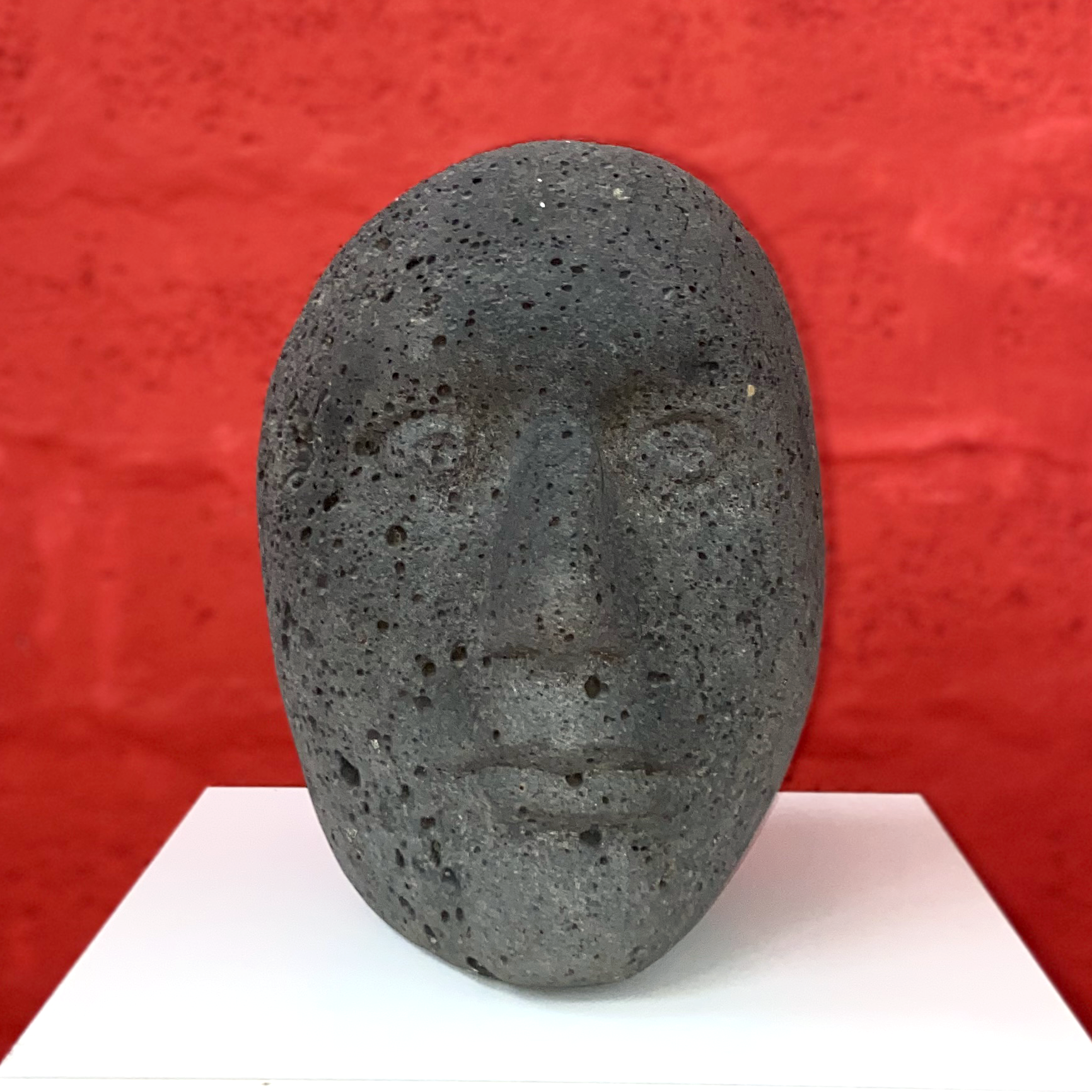Alfred Basbous
1924 – 2006, Rachana
Alongside his two brothers Michel and Youssef, Alfred's works not only defined but also signaled the future of sculpture in Lebanon. During his apprenticeship with his elder brother Michel, he discovered that the organic form held the most profound meaning that his chisel could convey. Initially, he pursued a realistic approach, focusing on direct stone carving portraiture. However, he gradually transitioned into simplified realism, which eventually led him to stylization, semi-abstraction, and non-representational forms.
By utilizing colored stones, Alfred Basbous heightened the vibrancy of his simplified forms by eliminating unnecessary details and refining the surfaces to showcase their natural texture and veins. He often juxtaposed smooth and rough surfaces to achieve a similar effect. His mastery of stone carving allowed him to reveal the life within the stone, with a keen sensitivity for smooth, flowing surfaces. His sculptures exude a quality reminiscent of objects shaped by sand and waves, evoking a sense of quiet contemplation. Whether figurative or abstract, his forms possess a gentle, inward movement, embodying a tranquil and dreamlike presence.
Alfred Basbous' sculptures are not only aesthetically pleasing and skillfully executed but also devoid of pretension, crafted with a genuine love for the art. They bear a distinct personality that showcases his strength of expression.
About his Work
Alfred's first encounter with the hammer and chisel occurred while he and his younger brother Joseph were cutting stones to construct the Basbous family house in Rachana. This acquaintance gradually transformed into a profound understanding of stone as he collaborated with Michel, honing his technique and refining his artistic sensibilities.
Alfred's sculptures are distinguished by their impeccable execution and the seamless harmony between form and material. His craftsmanship brings forth the inherent beauty of the grain in his chosen materials, which his creative vision shapes into well-balanced volumes. His profound familiarity with the intrinsic qualities of stone, coupled with his humanistic approach, enables his forms to exude a sense of organic vitality.
Many of his works are abstract or figurative interpretations of the female body, characterized by their fluid and flowing forms. Drawing inspiration from a diverse range of sources, including the works of Henry Moore, Jean Arp, and Constantin Brancusi, Basbous employed marble, bronze, and stone to capture what he believed to be the essence of the human form. He deliberately eschewed any superfluous or meaningless embellishments, striving to express the pure and essential nature of his subject.
Alfred Basbous
Head, 1964
Volcanic stone, 35 x 23 x 32 cm
Nammour Collection

